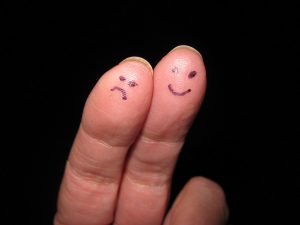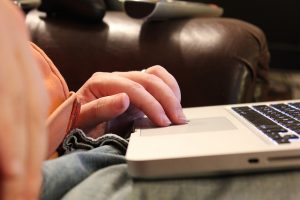
In 2013, the American Psychiatric Association published the fifth edition of their diagnosis bible: the DSM (Diagnostic and Statistical Manual of Mental Disorder). One of the changes was that the diagnosis ‘hypochondriasis’ was removed and replaced by two new diagnoses:
The key difference between SSD and IAD is that patients with SSD are clinically distressed by one or more physical (somatic) symptoms, whereas patients with IAD have mild or no somatic symptoms. For both groups, the key issue is excessive concern about their health.
We don’t currently have an evidence-base regarding what treatments work for patients who meet these new diagnoses. It is likely, given what we know about hypochondriasis, that they will respond well to exposure-based cognitive behaviour therapy (CBT).
This study by Erik Hedman and colleagues published in the British Journal of Psychiatry aimed to investigate how well exposure-based CBT works for SSD and IAD when it is delivered in the form of therapist-guided internet-based CBT (ICBT), unguided internet-based CBT (U-ICBT), and unguided bibliotherapy compared with an untreated control condition in a randomised controlled trial (RCT).

Health anxiety (or hypochondriasis) is now categorised in DSM-V as Somatic Symptom Disorder (SSD) or Illness Anxiety Disorder (IAD).
Methods
Recruitment
This was an RCT of 132 participants from Sweden with either SSD or IAD. A nationwide recruitment strategy was used, with information about the study provided by mental health and primary care staff, adverts in nationwide newspapers and a study web portal.
To be eligible participants had to meet the following criteria:
- Have a principal diagnosis of SSD or IAD according to DSM-V criteria
- Be aged 18 or older
- Able to read and write in Swedish
- No ongoing or prior episode of bipolar disorder, psychosis, substance misuse or addiction
- If taking an antidepressant, must have been on a stable dose for at least 2 months and agree to keep the dose constant throughout the study
- No suicidal ideation or severe depressive symptoms
- Not currently having psychological treatment for SSD or IAD and not completed CBT for SSD/IAD during the past year
- No serious somatic disorder to which health anxiety would be an appropriate response.
Potential participants had a 35-60 minute telephone conversation with a psychologist during which they were assessed for SSD/IAD (using the Health Preoccupation Diagnostic Interview, HPDI), other psychiatric disorders (Mini-International Neuropsychiatric Interview, MINI) and DSM-IV hypochondriasis (Anxiety Disorders Interview Schedule, ADIS).
215 potential participants were screened, and 83 were excluded on the basis of not meeting the criteria listed above. 114 participants (86.4%) met criteria for SSD and 18 (13.6%) met criteria for IAD.
Experimental conditions
Participants were randomly allocated on a 1:1:1:1 basis using an online random number generator to one of the following groups:
- Therapist-guided internet-based CBT (ICBT, n = 32)
- Unguided ICBT (U-ICBT, n = 33)
- Unguided bibliotherapy (n = 34)
- Waiting list control (n = 33)
All active treatments had the same content but differed in whether they were delivered using the internet (ICBT, U-ICBT) or a book (bibliotherapy) and whether there was guidance from a therapist (ICBT) or not (U-ICBT, bibliotherapy).
Treatments were 12 weeks long and after 12 weeks, participants in the control condition were given active treatment. Because of this, the participants in the control group were excluded from the 6-month follow up analysis.
The treatment model focused on the role of avoidance and safety behaviours as maintaining factors of health anxiety. The main intervention was systematic exposure to health anxiety-related situations/events, in combination with response prevention. Mindfulness was incorporated to assist participants in conducting the exposure exercises. There were 12 modules (i.e. one for each week of treatment) and each had homework to do on a daily basis.
In the ICBT group, participants were instructed to contact their therapist with a progress update at least once a week, and the therapist would reply within 2 working days. The therapist would get in touch via email or SMS if the participant seemed inactive (e.g. hadn’t logged in for one week). The therapist gave feedback on homework assignments. On average, therapists spent 63.6 minutes/patient (SD = 35.4) and posted 18.4 SMS messages (SD = 9.6). Participants in the U-ICBT group did not receive feedback on their homework, and instead were asked to upload a progress report to the online treatment platform. The bibliotherapy group received a 154 page booklet.
Outcome measures
The primary outcome measure was the score on the 64-item Health Anxiety Inventory questionnaire (HAI). Clinically significant improvement was defined in advance as an improvement of at least 21 units and meeting the criteria of absolute improvement (score <70).
Secondary outcomes were two other measures of health anxiety (Illness Attitude Scale, IAS, and Whiteley Index, WI), anxiety sensitivity (Anxiety Sensitivity Index), general anxiety (Beck Anxiety Inventory, BAI), depression (Montgomery-Asberg Depression Rating Scale – Self-rated, MADRS-S) and functional impairment (Sheehan Disability Scale, SDS).
The primary and secondary outcome measures were measured at three time points:
- Baseline
- Post-treatment
- 6-months follow up.
Assessments were completed over the internet and all participants received weekly SMS reminders. The authors used an intention-to-treat analysis.
Results
127 participants (96%) completed questionnaires post-treatment. 89 of the 99 eligible participants (90%) completed the questionnaires at the 6-month follow-up.
Participants completed an average of:
- 8.6/12 modules (SD = 3.0) in the therapist-guided ICBT group,
- 6.6/12 modules (SD = 3.6) in the U-ICBT group,
- 8.3/12 modules (SD = 3.3) in the bibliotherapy group.
The ICBT group completed significantly more modules than the U-ICBT group (p = 0.025).
Primary outcome measure
Post-treatment, the proportion of participants meeting criteria for clinically significant improvement on the HAI was as follows:
- ICBT: 53% (number needed to treat, NNT = 1.9)
- U-ICBT: 48% (NNT = 2.1)
- Bibliotherapy: 44% (NNT = 2.3)
- Control group: 0%
The amount of improvement across the three active treatment groups was not significantly different.
At follow-up, the percentage meeting criteria for clinically significant improvement was the same in the ICBT and U-ICBT groups and had actually improved in the bibliotherapy group (47%, NNT = 2.1).
Secondary outcomes
Compared to the control group, all 3 treatment groups had significantly lower health anxiety, anxiety sensitivity, general anxiety, depressive symptoms, and functional impairment.
Adverse events
It is nice to see a psychotherapy trial reporting adverse outcomes (see this Mental Elf blog). There was no significant difference between the four groups in terms of adverse events (ICBT = 6 participants, U-ICBT = 4 participants, bibliotherapy = 3 participants, control group = 2 participants). The most common adverse event was increased anxiety.

All of the active treatments in this study had NNTs around 2, which means that only two people would need to be treated for one person to go into remission.
Conclusions
The authors concluded:
Exposure-based CBT delivered as therapist-guided or unguided internet treatment or as unguided bibliotherapy can be highly effective in the treatment of SSD and IAD. These treatments have several central advantages with one of the most important being that these treatments can drastically increase accessibility to effective psychological treatment.
Strengths and limitations
This was a well-designed randomised controlled trial. The authors made use of an online random generator and the groups were broadly comparable at the start of the trial. Retention of participants was fairly good and the questionnaire measures used are well-validated.
However, it would have been good to see a behavioural measure alongside the questionnaires, such as the number of times that participants made contact with health care professionals during the study. It would also have been desirable if an active control group (e.g. befriending) was used instead of a waiting list control group. This is especially important in a trial like this where it is not possible to blind participants to the condition that they are assigned to. It would also be interesting to follow these participants up over a longer time frame to see whether the improvements in health anxiety persist beyond six months. The authors also didn’t report whether there was any difference in outcomes for people with SSD versus IAD (perhaps because the number of people with IAD was much smaller than SSD).
Summary
- Excessive anxiety about one’s health is common and places a high burden on health care services
- Exposure-based CBT delivered via the internet or in bibliotherapy form is effective at reducing health anxiety in participants with Somatic Symptom Disorder (SSD) or Illness anxiety disorder (IAD)
- These therapies are effective when delivered with or without support from a therapist
- The numbers needed to treat are very impressive – roughly two people need to be treated for one person to go into remission
- Consequently, services should consider exposure-based CBT as a low cost intervention aimed at reducing the distress and health care service burden caused by health anxiety.

A seemingly cheap, safe and effective treatment. Promising stuff and one to watch for commissioners of mental health services.
Links
Primary paper
Hedman, E, Axelsson E, Andersson E. et al (2016) Exposure-based cognitive-behavioural therapy via the internet and as bibliotherapy for somatic symptom disorder and illness anxiety disorder: randomised controlled trial. British Journal of Psychiatry 1-7, doi: 10.1192/bjp.bp.116.181396. [Abstract]
Other references
Langford A, Laws K. (2014) Psychotherapy trials should report the side effects of treatment. The Mental Elf, 30th April 2014.

RT @Mental_Elf: Today @Suzanne_Dash on exposure-based CBT (web-based & bibliotherapy) for somatic symptom disorder (health anxiety) https:/…
Worried sick: cCBT and bibliotherapy for somatic symptom disorder and illness anxiety disorder https://t.co/iGcj7HmGaS @Mental_Elf on a #RCT
Very clear and well-written blog, congrats. IIRC the convention is to round NNTs up to the nearest whole number. But it hardly matters as the difference between the control group is so dramatic. Shame the control group was only in existence for a very short time.
Web-based CBT & bibliotherapy
Safe & effective for #HealthAnxiety
So says well-designed RCT
https://t.co/IbZosKSMfA https://t.co/rfjh6s1lh2
Don’t miss:
cCBT & bibliotherapy for
Somatic symptom disorder & illness anxiety disorder
https://t.co/IbZosKSMfA https://t.co/vs9aDN5IlX
@andrewbeck45
Worried sick: cCBT and bibliotherapy for somatic symptom disorder and illness anxiety disorder https://t.co/apxON6dLSk
Worried sick: cCBT and bibliotherapy for somatic symptom disorder and illness anxiety disorder https://t.co/wstgMP53ik @Suzanne_Dash
cCBT and bibliotherapy for somatic symptom disorder and illness anxiety disorder https://t.co/sMnsY5HGQz via @sharethis
Worried sick: cCBT and bibliotherapy for somatic symptom disorder and illness anxiety disorder https://t.co/MTnTcyRlS8 via @sharethis